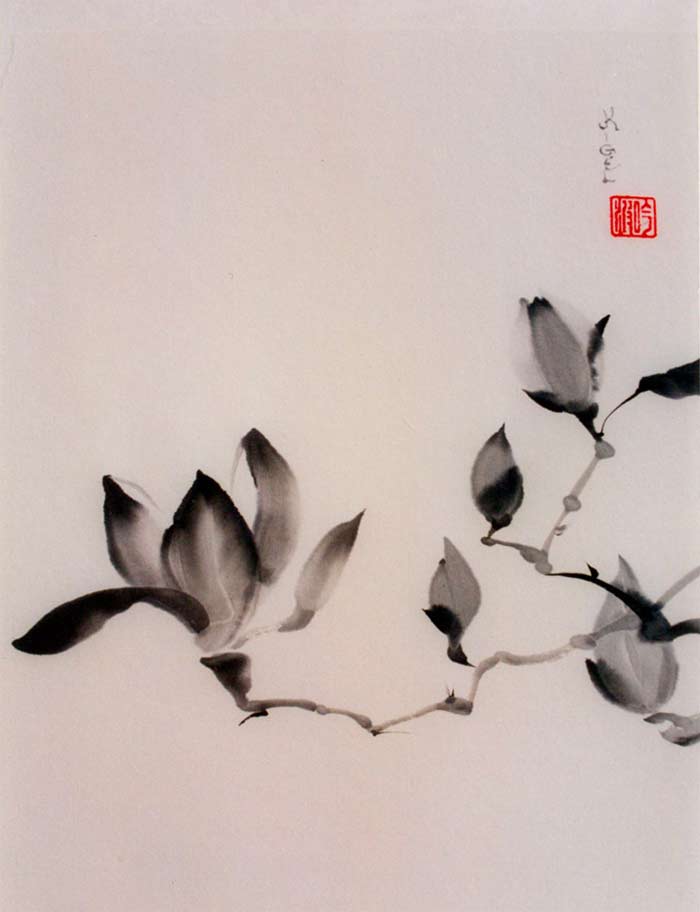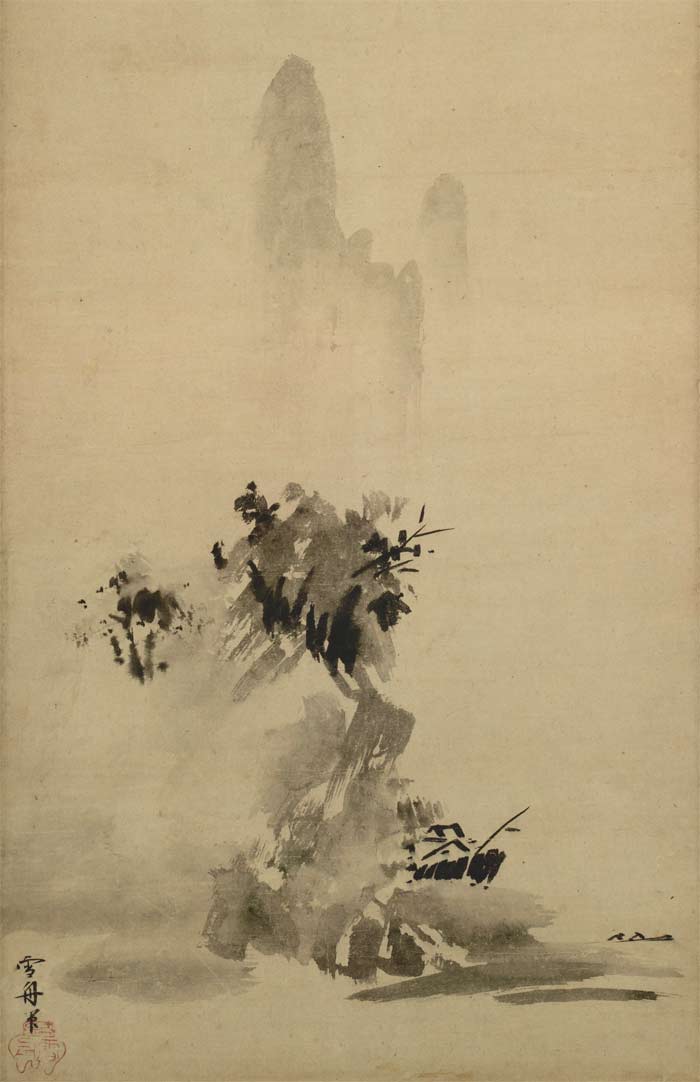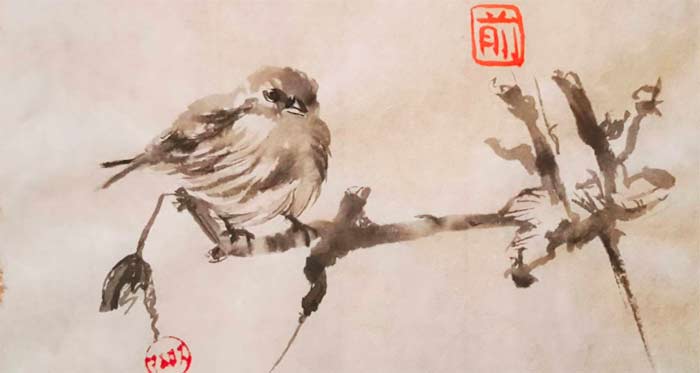Article by J. Danilo Garcés Rodríguez
There is a short story called The flower sermon about one of the last lessons the Buddha gave to his followers in which he was to talk about the law, or the essence of life, and he did it by taking a flower on his hand and just holding it while looking the persons around him in silence. Buddha handed the lotus to Mahakasyapa and began to speak. “What can be said I have said to you,” smiled the Buddha, “and what cannot be said, I have given to Mahakasyapa.” Mahakasyapa became Buddha’s successor from that day forward.
I found The flower sermon while looking for some historical background on the art of sumi-e, a particular style of painting originated in China by the 7th century and spread to Japan in the 13th century by Zen Buddhist monks. Just as in the sermon, this painting style has a deep, quiet, almost solemn approach to the act of understanding and portraying the world. This is reflected in the training of the Zen monks who practices it a form of meditation for the particular boldness and concentration that it ask of the painter. Latter, famous samurai warriors such as Miyamoto Musashi also practiced it finding in its quick and bold technique a metaphor of the calm that must be present at all times in the hearth of a swordsman before the battle, calm that the sumi-e technique ask of the painter before he takes the fearless strokes in the page.

As in Buddha’s Flower sermon sumi-e is based upon an understanding of silence and the universal truths that lies in the simplicity of everything, for this, in the sumi-e approach to painting, no stroke is to be taken without first having undergone a profound understanding of the subject to be portrait and no two strokes are to be needed to portrait anything, what one must look to achieve is to capture the essence of the subject with the fewer among of strokes, details among to nothing but to distract from the true nature and soul of the subject.
If one were to describe sumi-e as an aesthetic experience it would be that of contemplation. It’s like walking until you reach the top of a hill, you hear the wind moving each blade of grass and in front of you the landscape unfolds silently, there’s no music, there is no singing birds, you do not hear anything but the rocketing of trees and branches, and inside of you all thought has quieted down, all emotion and feeling; everything quiets down while your breath takes a soft rhythm and you realize that in that moment you are just there, completely there.

In this sense the correlation with medication and philosophy is palpable in the art of sumi-e for not only a deep contemplative state is asked of the painter in the creative process but also his capability to strike the viewers sensibility by being able to portrait the life of the subject in its purest form.
Compared to western painting styles sumi-e may seem simple, and it is true that this painting approach do not seek to portrait that sort of intimacy that one can find in European painting, but that has a very good reason. Sumi-e is not the art of intimacy but the art of contemplation. Intimacy is warm, it is soft and alluring, it is mysterious at its best and hides its secrets seducing the viewer, making him want to understand. Contemplation on the other hand is heatless, it’s almost ethereal, it does not want to tell a secret, it does not call to be observed, it just sits there waiting for the observer to understand, to calmly sit at the top of the hill, or by the lakeside or the meadows and just breath in the flowers diaphanous air.
Contemplation feels like the wind, without love, it seems plain, simple and cold and it often leads to void, but when the act of contemplation is accompanied by love it breathes, and it’s free; that’s why sumi-e, as the art of contemplation, does not ask to neither the painter nor the viewer to expect nor look for anything beyond the subject of the painting, but just to breath, to see and feel in the simplicity of the flower in Buddha’s hand the essence of everything.






Thank you. This was a refreshing insight into another way to understand and practice creativity